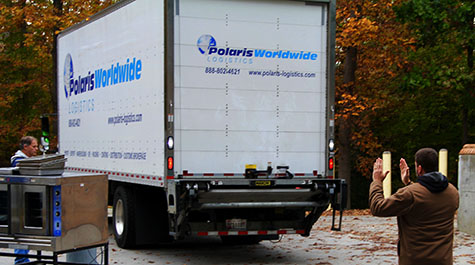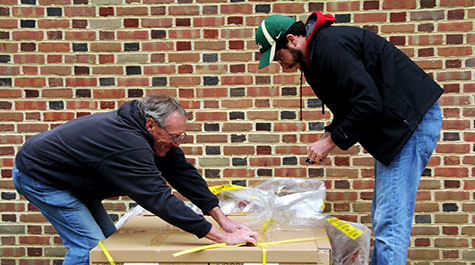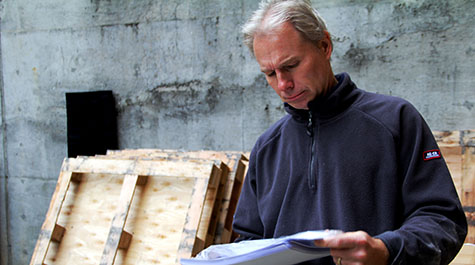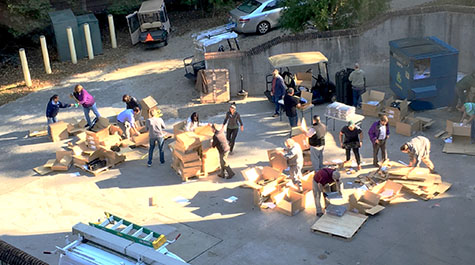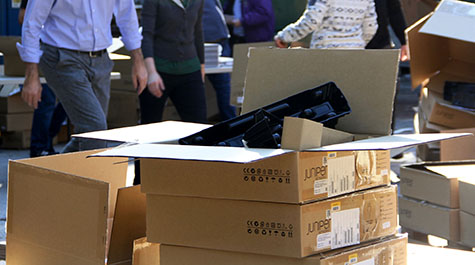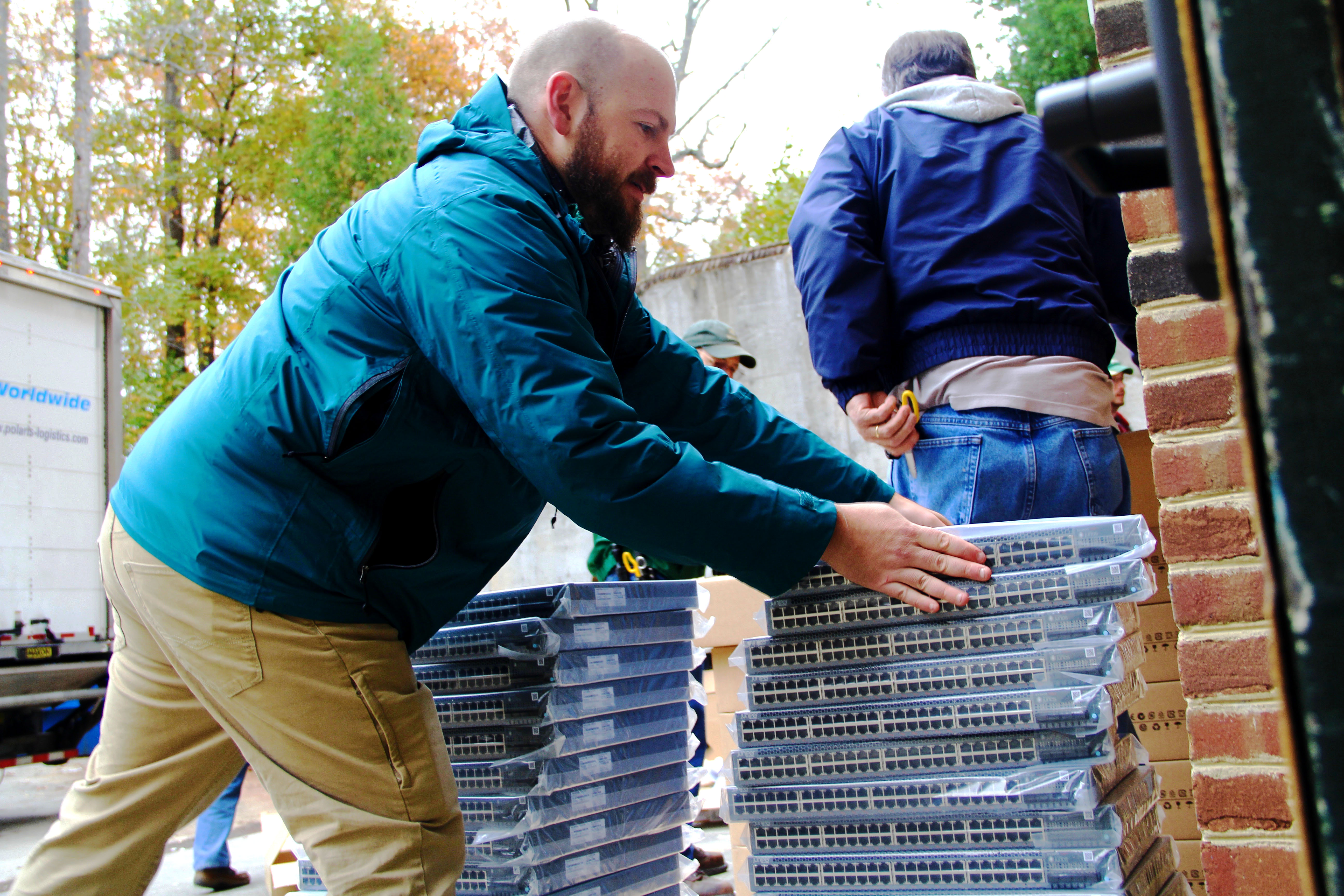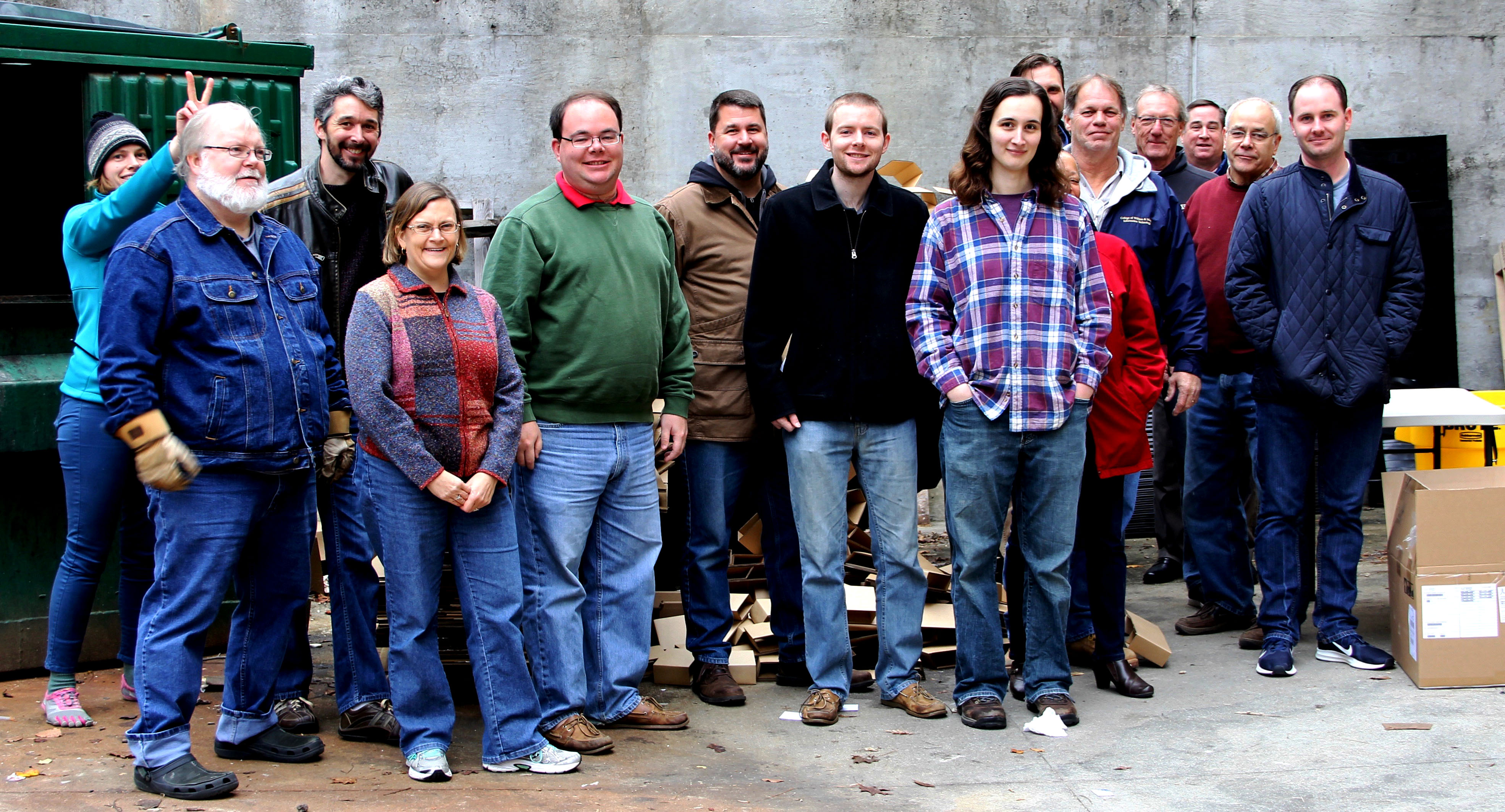700 Switches
An assembly line of work organized around the large trucks. Several people were working on moving the boxes out of the trucks, others were unpacking the unloaded boxes and stacking the contents, others yet were breaking down the boxes into the backs of trucks which then removed the cardboard to clear space for more boxes. Multiple large trucks, almost 40 people from the Information Technology staff, including the Chief Information Officer, several hours’ worth of work, and 700 switches were officially unpacked and stacked in storage.
Switches are a machine which transport network traffic to the closest source. Access points connect to switches, which can then lead to other switches or ultimately to a router. The switches on campus are similar to those found in residential homes, but they differ in their size and arrangement. Campus switches are larger and are broken out in order to accommodate for the vast network traffic of campus.
Senior Network Engineer Norman Elton describes switches as “…the bread and butter. Switches used to be the front end of the network, but nowadays, they are in the middle and are more important as a support system. They give power and connectivity to the wireless access points.”
For example, on an average Tuesday afternoon, 13,000 devices were connected to the network and an additional 10,000 devices were directly connected to switches.
Every building on campus has at least one switch. Depending on the size of the building, the number of switches within it varies. Smaller buildings, such as the Jamestown Rd. Houses, have only one switch, but larger buildings, such as Landrum Hall, have about 20.
Yet, the switches on campus need replacing. In ideal conditions, a switch can last for about eight years. In the older William & Mary buildings where the humidity of Williamsburg is relentless, a switch has a life of about 6-7 years. Many of the campus switches are beginning to malfunction. Some of the switches won’t accept new code and others randomly reboot during the day.
This is where the 700 new switches come in handy.
Each new switch has to be updated and configured before replacing an old switch. Once the switches are tested, the IT Network Team works to replace the old network switches with the new ones. Academic buildings are the first to have their switches replaced. During the process of replacing a switch, the corresponding area can anticipate experiencing a loss of (or inconsistent) network activity.
In order to minimize disturbances to the campus network, much of the work occurs early in the morning. By the time 8 am classes begin, W&M IT’s Networking team has already replaced a set of switches. Dorms will be done during the summer to also limit interruptions to network usage.
Not only will new switches be more reliable, but they will also have other benefits. Network Manager Scott Fenstermacher explains: “Since I’ve been at W&M, this will be my third time replacing switches. The process is a standard routine, but each time we automate the switches more. Unlike the old switches, many of which only had one power source, the new switches are connected to two power sources. Therefore, the switches are more reliable, and we will be able to conduct maintenance with even fewer interruptions in the future. These aspects also allow the switches to carry a larger power load and anticipate future campus needs for power.”
However, these changes are unlikely to be visible to the average campus user. Elton adds, “Updating the switches is exciting for us because we’ve been working hard on this project, but to the rest of campus, the change will be difficult to see.”
Although campus might not notice the change, the deployment of the switches is building reliability and capacity within the campus network. The team intends to complete the replacement of switches across campus by the end of the calendar year, if not sooner.
The switches are a reminder that not everything successful on campus is in sight.
 Skip to main content
Skip to main content



